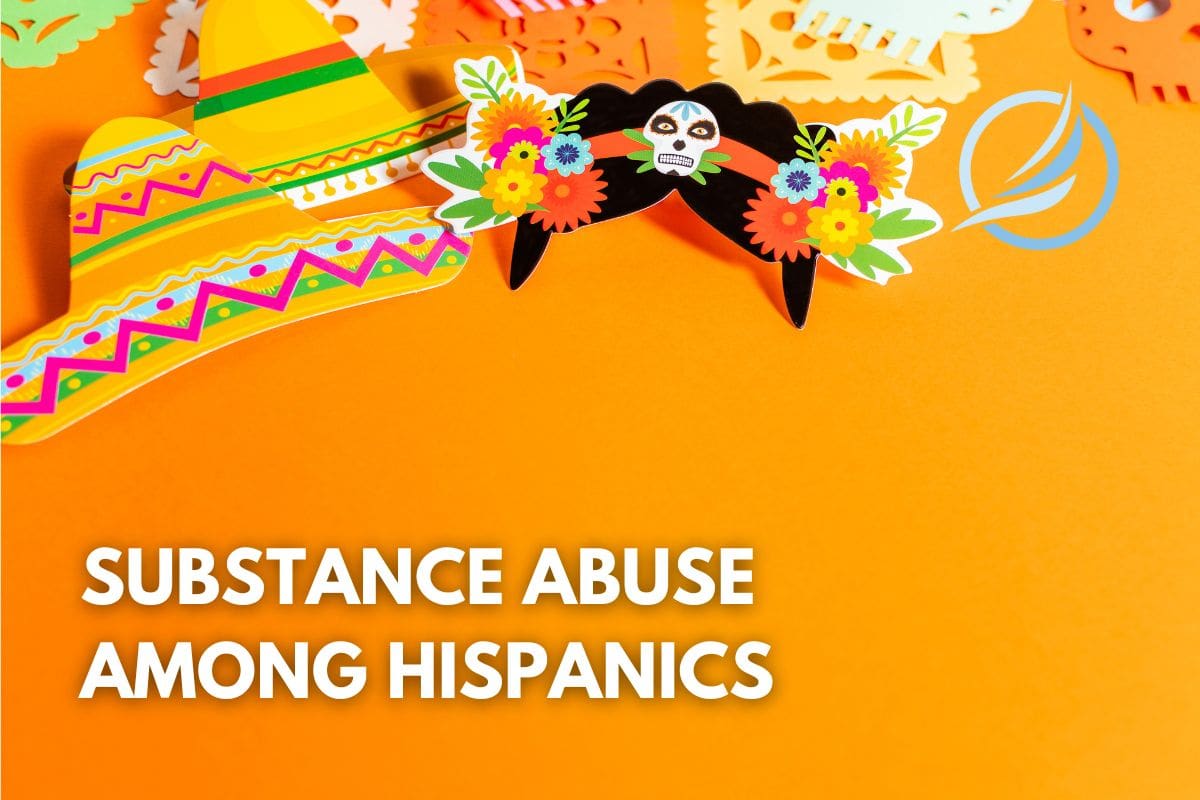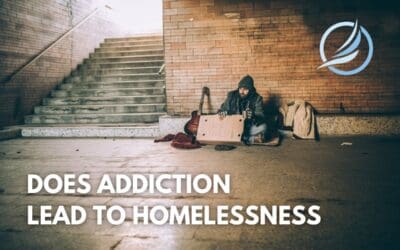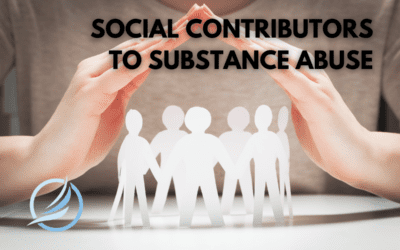Addressing Challenges and Celebrating Strength During Hispanic Heritage Month
Hispanic Heritage Month (“Mes de la Herencia Hispana”) is celebrated every year from September 15 to October 15. It celebrates the cultures and contributions of Americans of Spanish, Mexican, Caribbean, and Central/South American heritage.
But in addition to celebrating Hispanic heritage and its importance in American society, Hispanic Heritage Month has become an opportunity to raise awareness about the unique challenges faced by the community, particularly around critical issues like substance abuse.
In the name of Hispanic Heritage Month, let’s explore how members of the Hispanic community face particular challenges and barriers when experiencing substance abuse and seeking treatment.
Understanding Substance Abuse in the Hispanic Community
Substance abuse affects individuals across all ethnicities, but certain challenges within the Hispanic community contribute to specific patterns in illicit drug and alcohol use. According to the Substance Abuse and Mental Health Services Administration (SAMHSA), Hispanic people have high rates of illegal drug use compared to non-Hispanic white people.
For example, SAMHSA’s National Survey on Drug Use and Health (NSDUH) estimated that around 1.1 million young Hispanic people used illicit drugs in the past year, including 208,000 who misused opioids.
Additionally, alcohol remains one of the most commonly abused substances within the community. Research shows that 18% of Hispanic immigrants have a family history of alcohol use, which leads to higher mean scores in the Alcohol Use Disorders Identification Test (AUDIT).
What Substances Affect the Hispanic Community in the US?
The substances that affect the Hispanic community the most are alcohol, opioids, and methamphetamine.
Alcohol is a culturally accepted part of social gatherings and can often contribute to normalized heavy drinking. On the other hand, opioid addiction is rising among Hispanic individuals, and there are already more than a million young Latinos using illicit opioids every year.
Finally, methamphetamine use also impacts Hispanic populations. In general, methamphetamine overdose deaths saw a concerning increase of 1.8 to 10.1 per 100.000 deaths among all men in the US between 2011 and 2018, with the rate for all women going from 0.8 to 4.5 per 100.000 in the same period.
The rate at least quadrupled among Hispanic men and women, with rates among Hispanic men increasing from 1.4 to 6.6 per 100.000 and from 0.5 to 2.0 among Hispanic women.
Factors Contributing to Substance Abuse in Hispanic People
Various cultural and societal factors play a role in the way Hispanic people are affected by addiction.
One of the most important ones is not unique to Latin American heritage but is very prevalent: the stigma of addiction. Indeed, within many Hispanic families, there is often a stigma surrounding mental health and substance abuse.
Under these conditions, seeking help for addiction may be seen as a source of shame, weakness, or failure, which can prevent individuals from reaching out for support.
However, stigma is not the only factor at play.
Acculturation, Stress, and Discrimination
Research shows that stress related to acculturation, perceived discrimination, and conflicts with parents about acculturation are unique challenges that young Hispanic people face, and it increases their risk of substance use.
- Young Hispanic people face a lot of stress trying to adapt to American culture while retaining their Hispanic heritage, which can be a significant risk factor.
- The stress of experiencing and perceiving discrimination can also increase the risk of using substances as a coping mechanism.
- Finally, conflicts with parents about how rapidly young Latinos adapt to American culture play a similar role.
Barriers to Treatment That Affect Hispanic People
The main obstacles to treatment that Hispanic people face in the US are:
- The lack of access to bilingual treatment programs.
- Fear of speaking to government agencies (in the case of undocumented immigrants).
- Lack of health care coverage.
The 2018 NSDUH indicates that 92% of young Hispanic people with a substance use disorder did not receive treatment in a specialty facility.
All in all, the combination of stigma, cultural clashes, discrimination, and barriers to treatment make Hispanic people in the US uniquely vulnerable to substance use and subsequent addiction.
The Impact of Substance Abuse on the Hispanic Community
Substance abuse has deep consequences in the Hispanic community. These consequences affect individuals, families, and communities and eventually become large enough to influence public health nationwide.
The following are some of the most significant impacts of substance abuse in the Hispanic community.
Unsafe Sexual Behavior
Substance use makes people more likely to engage in unsafe sexual behavior, increasing the risk of contracting HIV, hepatitis C, and sexually transmitted infections (STIs). For example, Hispanic people are disproportionately affected by HIV infections, making up 33% (10,500) of HIV infections in 2022 despite being 18% of the population.
Along with Black/African American people, Hispanic people made up 70% of estimated new HIV infections in 2022.
Health Consequences
Substance abuse takes a toll on the physical and mental health of individuals. Among Hispanics, alcohol-related health issues like liver disease are more common, and substance abuse is often linked with heightened rates of mental health disorders such as depression and anxiety.
Mental Illness
The association between mental health and addiction is complicated, but it is known that both can influence and make each other worse. Unfortunately, a significant number of Latinos have mental illness.
According to NSDUH, around 17% of Hispanic adults have a mental illness, and 15% of young Hispanic people have experienced a major depressive episode.
Substance use may contribute to mental illnesses like depression and anxiety. Still, it can also be a consequence of it being used as a coping mechanism to manage the painful emotions associated with it.
In cases of simultaneous mental illness and substance abuse, they can reinforce each other and make it harder to recover from both.
Family and Community Impact
Substance abuse can also affect families and communities. In many cases, it is associated with domestic violence, financial instability, and broken family structures, as loved ones struggle to cope with the addiction of a family member.
Economic and Social Costs
Substance abuse within the Hispanic community extends to lost productivity, increased healthcare costs, and strain on social services.
The Role of Hispanic Heritage Month in Addressing Substance Abuse
As a celebration of everything Hispanic, Hispanic Heritage Month plays a significant role in finding solutions for substance abuse in the community. These are some ways Hispanic Heritage Month can promote solutions during its celebration.
Raising Awareness
Hispanic Heritage Month is an ideal time to raise awareness about the importance of addressing substance abuse in the community. By highlighting the unique challenges Hispanic individuals face, we can begin to break down the stigma that surrounds addiction and mental health.
Celebrating Strength and Resilience
This month should also serve as a celebration of the strength and resilience of those who have learned to manage and overcome addiction. By sharing recovery stories from Hispanic people, we can inspire others to seek help and embrace their recovery journeys.
Promoting Culturally Competent Care
Finally, Hispanic Heritage Month is an opportunity to promote the importance of culturally tailored treatment options. That’s why SAMHSA believes that creating a culturally and linguistically competent workforce is essential to helping Hispanic people receive treatment for substance abuse. This may include programs that incorporate Hispanic values and provide bilingual services.
Resources and Support for the Hispanic Community
While Hispanic people in the US face unique challenges in substance abuse treatment, there are ways to access resources and support for recovery. These resources are available to Hispanic people during Hispanic Heritage Month and beyond.
Community-Based Programs
Several organizations focus on substance abuse prevention and treatment for Hispanic communities. These community-based programs offer culturally competent care and aim to reduce barriers to treatment through outreach and education.
An example is SAMHSA’s Network to Eliminate Disparities in Behavioral Health (NNED), which provides training and resources for community-based organizations like the Puerto Rican Organization for Community Education and Economic Development, Inc. (PROCEED).
PROCEED provides counseling and treatment for Hispanic people. This is an invaluable resource since the lack of bilingual care is one of the main barriers to treatment for Hispanic people.
Culturally Competent Treatment Centers
This point is related to the previous one but requires special attention.
That’s because finding a treatment center that understands and respects Hispanic cultural values can make a significant difference in recovery. Bilingual services and staff with cultural training can help patients feel understood and supported throughout their journey.
The following strategies and policies would make culturally competent treatment centers more accessible to Latinos in the US:
- More centers are opening across larger geographical areas, especially the ones without medical and transportation infrastructure.
- Expanding outpatient care will make it more accessible for Hispanic people, the family’s main financial providers.
- Training and hiring more Hispanic social workers.
Family and Community Support Networks
Family and community are essential components of recovery. Strengthening these networks through family counseling, support groups, and community education can foster a more supportive environment for individuals in recovery.
However, some traditional recovery techniques related to those around us can be incompatible with the cultural background of Hispanic people. A common advice is to minimize time with people who promote drug use, which may include friends and family.
However, many Hispanic people greatly value close families. Hence, addiction experts need to build programs that consider the implications of “Familismo,” a term that summarizes the importance of family in Hispanic culture.
Steps to Take During Hispanic Heritage Month
Hispanic Heritage Month is a great time to become active in helping Hispanic people manage and overcome substance abuse.
Here’s what you can do this month and beyond to contribute to making substance abuse and mental health care more accessible to Latinos in the US:
- Get involved in education and prevention campaigns aimed at reducing substance abuse in the Hispanic community.
- Consider supporting local Hispanic organizations that treat substance abuse. You can donate or volunteer.
- Attend Hispanic Heritage Month events and explore ways to promote treatment for Hispanic people. The official website lists event highlights you may be interested in.
- Spread the word via social media to reduce stigma. For inspiration, use the official website’s social media resources.
By participating in Hispanic Heritage Month, especially in events related to substance abuse, you become more aware of the accomplishments of Hispanic people and the unique problems they face.
This month, take the opportunity to support Hispanic people and contribute to helping them access the addiction treatment they need but have difficulty accessing.


































